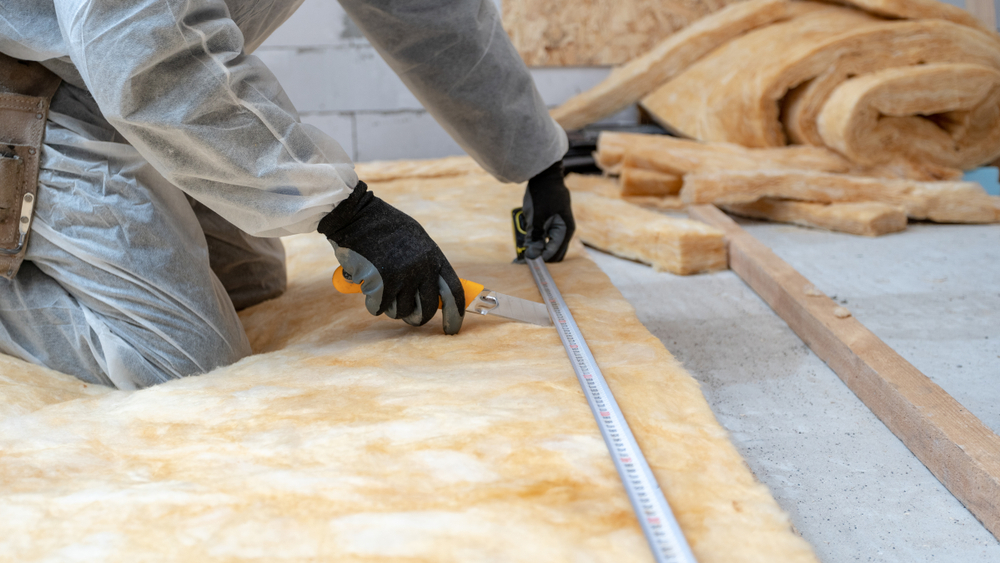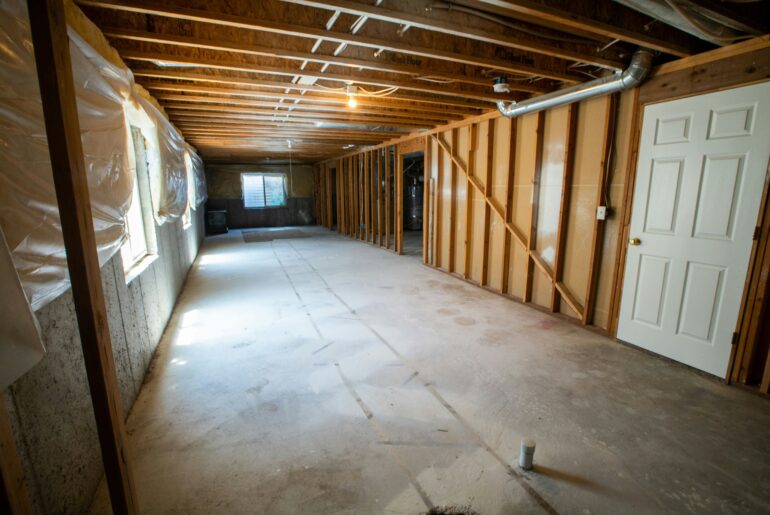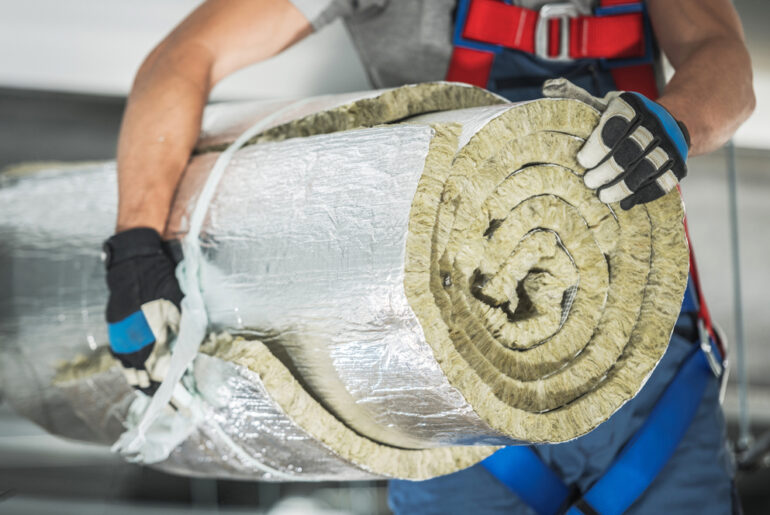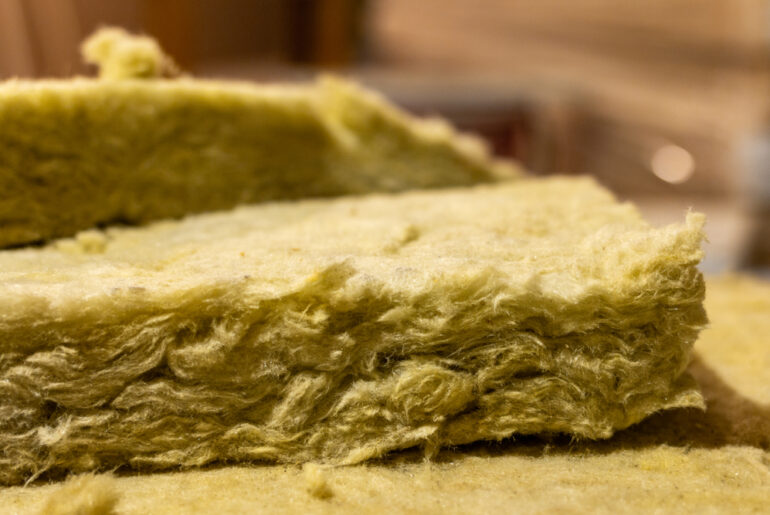Fiberglass insulation is used to insulate the floors, walls, and ceilings of structures with internal framework, like a house. Fiberglass insulation is available in several shapes and sizes, so installation usually requires at least some cutting of the material.
Cutting fiberglass insulation is not complicated or difficult, but using the proper tools will result in a better, safer DIY insulation project. Working with fiberglass insulation requires the use of personal protective equipment, or PPE, like gloves, eye protection, and a respirator.
Here we will discuss which tools work best for cutting fiberglass insulation and why. We will discuss how professionals cut and trim fiberglass insulation and why using the appropriate tools is important to a successful project.
Can I Avoid Cutting Fiberglass Insulation?
When insulating most structures there will be some amount of cutting and trimming required for complete effectiveness. Ideally, using pre-cut fiberglass insulation batts is the best option because it will only take about half as long as using continuous fiberglass insulation rolls.
Manufacturers will offer many versions, but most pre-cut fiberglass batts are available in:
- 96” (8’) -120” (10’) lengths to accommodate different ceiling heights
- R-11
- R-13
- R-19
- R-25
- R-30
- R-38
- R-49
- R-60
Pre-cut fiberglass insulation batts are available faced or unfaced, so remember that faced fiberglass batts will dull your tools faster, so plan accordingly. If you purchase the correct insulation, your additional cuts will be minimal and mainly confined to small gaps and openings.
Is Fiberglass Insulation Hard to Cut?
Fiberglass insulation is fairly easy to install by a do-it-yourselfer, but mistakes are common on the first project. Fiberglass insulation is not heavy, but working with it successfully, especially in an attic or crawlspace, can be challenging for a first-timer.
Here’s a few things to remember when cutting fiberglass insulation:
- Wear protective clothing and safety gear
- Provide a large, flat area to work, like the floor or a large work bench
- Make sure the space is well ventilated
- You will be working with very sharp blades, so use the tools safely
- Recruit a helper or have help standing by
- Decide in advance if you will need ladders, walkboards, or scaffolding
How Do I Know Which Tools to Use to Cut Fiberglass Insulation?
Generally, fiberglass insulation cutting tools do not need to be fancy. You can often use a kitchen cutting knife or house scissors to cut the fiberglass in a pinch, but it’s a good idea to have tools just for cutting fiberglass. Here’s why:
- Fiberglass insulation will dull your scissors and knives quickly, so use disposable scissors or utility blades whenever possible
- The thicker the fiberglass insulation is, the larger your cutting tools will need to be
- Some ingenious do-it-yourselfers have tried to use hedge clippers to cut fiberglass insulation, taking advantage of the long blades. Unfortunately, even if hedge clippers work, they will probably require sharpening before they can be used again.
Which Tools Are Best For Cutting Fiberglass Insulation?
Using the appropriate tools to cut fiberglass insulation will make the project easier and better fitting. Here’s a list of tools made just for cutting fiberglass insulation, and a list of household tools you can use as an alternative when required:
Professional Fiberglass Insulation Cutting Tools
Household Fiberglass Insulation Cutting Tools
- Long bladed carving knife or other kitchen knife. Serrated blades are better if the knife is less than sharp
- Household scissors
- Hedge Clippers
- Bread Knife
- Snap blade utility knife
Which Tools Should I Avoid Using When Cutting Fiberglass Insulation?
Although it may seem like a tempting time saver, using abrasive tools to cut fiberglass insulation is not recommended. Here’s a list of tools you should avoid because they are too dangerous, ineffective, or both:
Electric Power Saws
Never use a power saw to cut fiberglass insulation, even if it is in rigid board form. Power saws remove far too much material during the cutting process, which can become airborne and dangerous to the occupants.
There are a few exceptions, as some electric power saws are not as aggressive as a circular saw or reciprocating saw. Powered hand saws like this one work extremely well for cutting rigid fiberglass insulation because they vibrate instead of rotate.
Gas Powered Saws
If you have a whole stack of rigid fiberglass board insulation that needs to be the same size, it may seem tempting to use a large gas powered saw, like a chainsaw or hedge trimmer to cut the boards.
However, these saws are not precise tools, so they will remove an inordinate amount of material as they cut and leave a very rough edge on the boards.
Table, Radial Arm, and Band Saws
Table saws, radial arm saws, and band saws are common shop tools used to cut wood and metal. These shop tools are inappropriate for cutting fiberglass insulation because since they are shop tools they are not portable.
Any tools you use to cut fiberglass insulation should be portable and easy to move around. If not, you will find the project is more tiring and time intensive because you will spend more time walking back and forth to the saw than you will actually using the tool.
Which Fiberglass Insulation Are You Cutting?
Rigid fiberglass insulation boards are made very differently than the fiberglass insulation batts most of us are familiar with. Rigid fiberglass boards are usually no more than a couple of inches thick, but they are much more dense than fiberglass batts.
Here’s a list of the typical forms of fiberglass insulation currently available(except loose fill) and which tools are used to install them:
Unfaced Fiberglass Batts
Unfaced batts are usually cut with large scissors, shears, or a long blade knife. Spray foam trim knives are also used to cut fiberglass insulation because the blade is very long, but flexible. The blade is very thin, but it will flex instead of bend, making it very durable.
Faced Fiberglass Batts
Faced fiberglass batts include a paper backed vapor barrier, which will dull your cutting tools. Faced fiberglass batts are usually cut with insulation shears or an insulation knife.
Rigid Fiberglass Boards
Rigid fiberglass boards are usually cut with tinner snips like these, or insulation shears, depending on the thickness of the board. Insulation knives are also ideal for cutting rigid fiberglass insulation boards, although the extra long blade is not needed.





